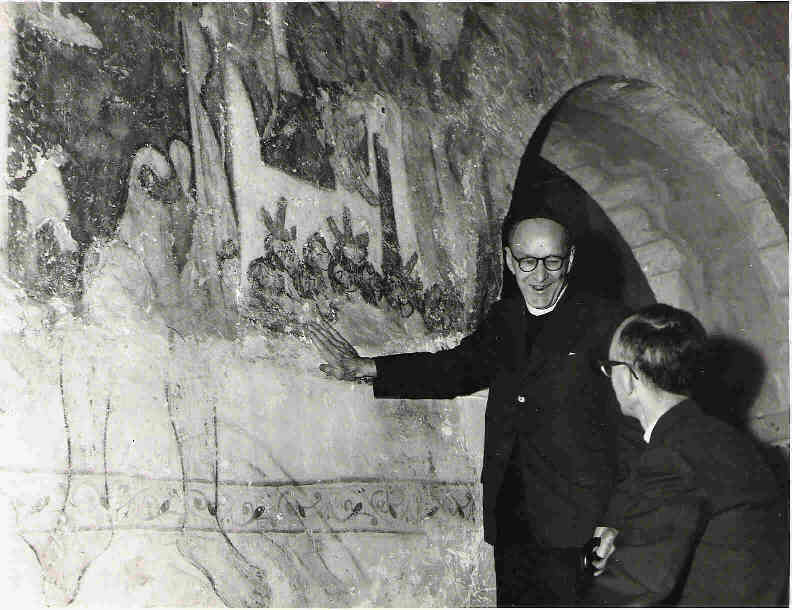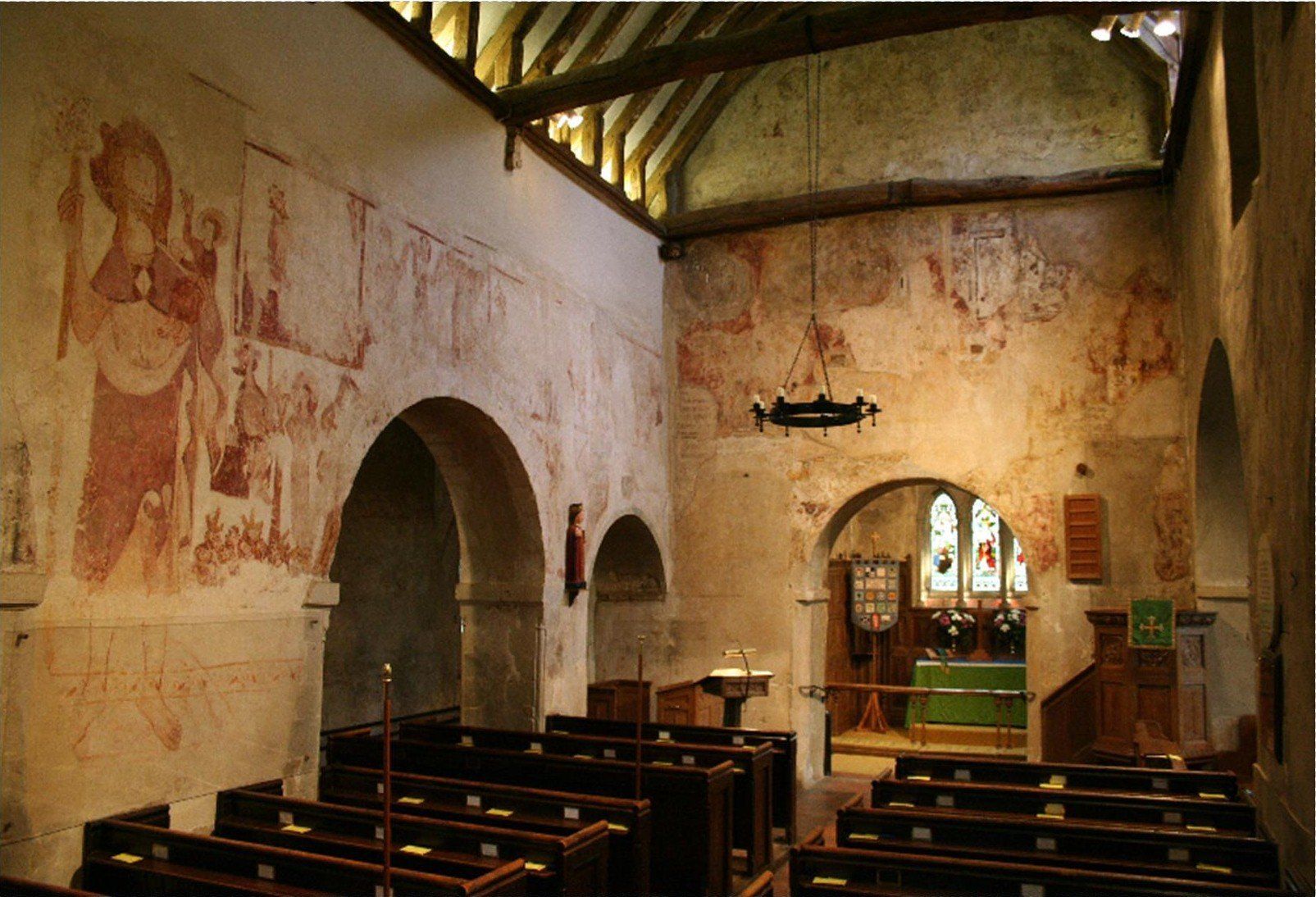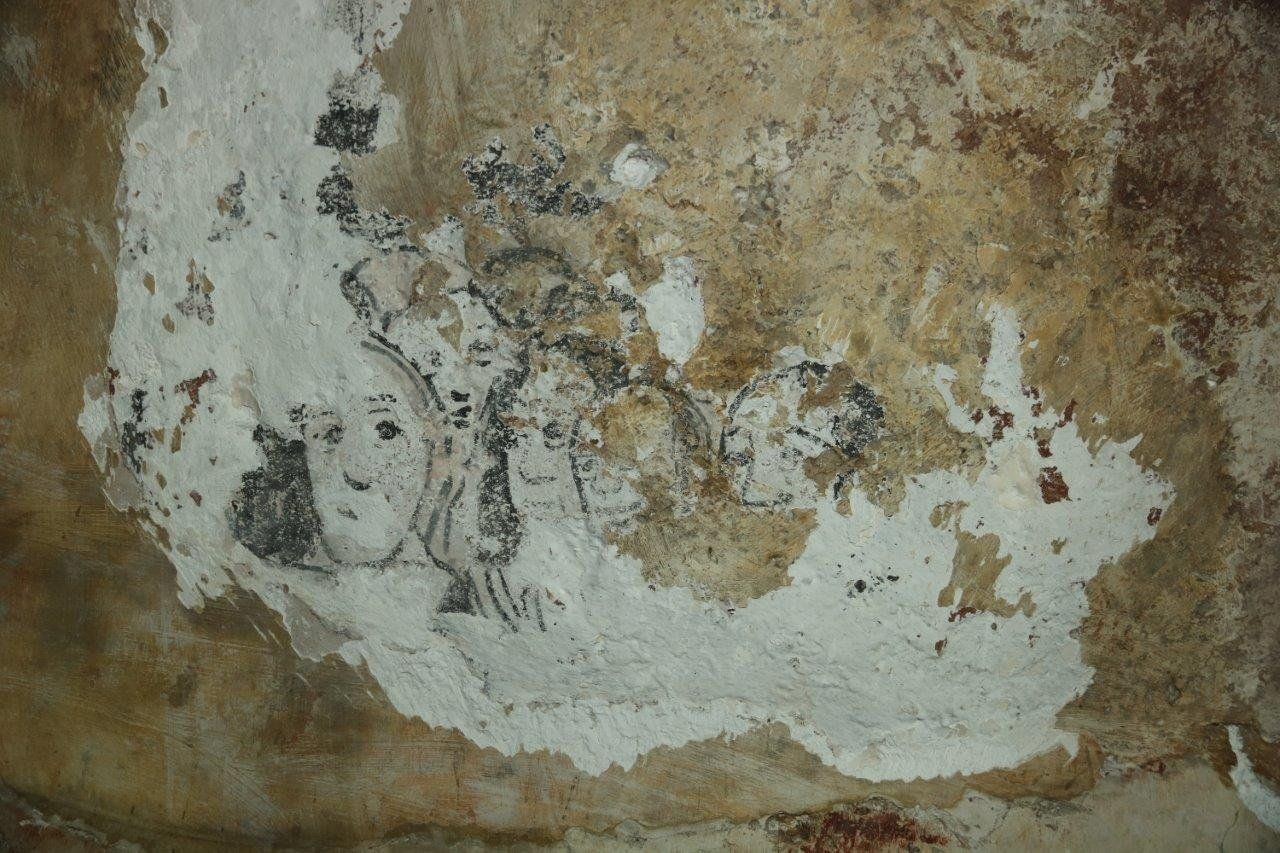The Wall Paintings
A unique ensemble of national importance

Discovery
The paintings were first uncovered in 1931, hidden under limewash for centuries.
Button
The Nave Until 2017
The 13th century St Christopher & St Catherine Paintings on the north wall of the nave, and the increasingly obscured chancel arch paintings as they looked until 2017.
Button
The restored Nave Paintings
Following the successful award of a Heritage Lottery Grant & significant fundraising, the paintings in the nave & throughout the church were conserved & restored in 2017.
Button
Faces from the past
A 'brand new' discovery of 15th century 'Doom' painting was made in 2017.
Button
Revealed
Seeing the light of day for the first time in 500 years.
Button
The Christopher Project
-
Scaffolding in the Nave
ButtonThe Nave was out of action for 3 months in the summer of 2017 to enable the conservation of the walls.
-
Conservators at work
ButtonThe painstaking work of conserving the paintings and making judicious repairs to the 1000 year old plaster.
-
Faces from the past
ButtonFragments of a previously unknow 15th century 'Doom' painting were discovered in 2017.
-
Before and After
ButtonThe right half of the Chancel Arch pier appears clearly once the wax, dirt and grime has been removed.









